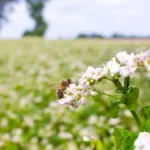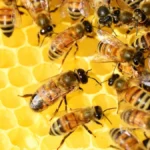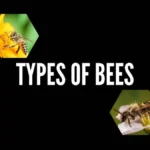Leaf cutter bees are an essential part of our ecosystem – but they do make unsightly holes in some types of plants. I often get asked, “How to get rid of leaf cutter bees”? More often than not a few clever tricks allow us to encourage people to keep them, but in such a way that they bring benefit but cause less damage. Let us look at options for this.
Let us start with a few very important questions which can help you make your decisions.
Do Leaf Cutter Bees Sting Or Bite?
Technically they can sting. I have played with these insects and worked in plants covered in them. On one occasion when I was pruning my perennial basil plants and eating a flower I even had one in my mouth – it had every reason to sting me but did not.
Leaf cutter bees just don’t sting easily. My friend got stung by one when we were driving and it blew in the window. He picked it up and played with it, and it was a bit injured. He is an entomologist and interested in how intense stings are. This bee stung him on the finger and he said it was about 1/10th of an average bee sting.
So this is really not a scary bee type. They are so unlikely to sting that you can be almost sure they will never sting you. And if they do, it is a non-event.
What Are Leaf Cutter Bees Attracted To?
Leaf cutter bees are excellent pollinators that work within a very close range of their nesting site. They cut little circular sections of leaf and use these to roll up and make a tube to pack with pollen and lay an egg in the tube. This egg will hatch and become a leaf cutter bee normally in the next season.
They like soft leaf types that they can cut their circles of leaf from. Sometimes they will also use flower petals such as rose petals if they cannot find something better. This is normally where we run into conflicts – people just don’t like their roses having holes in their petals.
Leaf cutter bees require small crevices and cracks to place their nests in. These are solitary bees – they do not build a hive. Each female has her own nest. When asking how to get rid of leaf cutter bees, it is often a case of asking how do I make it that they cut holes in something that does not matter rather than my roses, etc. More on that in a bit.
Should I Kill Leaf Cutter Bees?
No.
Leaf cutter bees are important indigenous pollinators that perform ecosystem services upon which we depend to survive. I always tell people that it is easier to learn to live with them and adjust their behavior so that it causes no problems to you.
Leaf cutter bees pose no threat to you and it is just a small behavioral change to allow you to live with these beautiful animals. They will bring joy and happiness to your garden and increase the productivity of all your flowering plants.
How Do You Get Rid Of Leaf Cutter Bees Naturally?
When we look at how to get rid of leaf cutter bees the easiest way to do this is not to actually get rid of them, but to shift their behavior to a place where it does not worry you. I find that they will definitely make a lot of holes in rose petals and lilies if you don’t give them a better source of leaf to cut sections from.
Plant Perrenial Basil
When it comes to how to get rid of leaf cutter bees’ visible leaf damage, one of the best plants of all time for all solitary bees is perennial basil or holy basil. The names of this plant vary from place to place, but it is edible basil that can grow year-round. If you are in a colder climate, grow it in pots and place it indoors for the colder months.
It clones easily and you can propagate thousands of basil plants from a single mother every spring and ensure that your garden is full of flowers – AND – leaves. Leaf cutters are lazy – why go looking for leaves when the place you get flowers has leaves already. My basil plant sometimes looks like a shotgun shot it – but these plants can easily take a lot of abuse and stay healthy.
Here is a seed pack that will contain some perennial species.

Basil is both a rich source of flowers for all sorts of solitary bees and a great source of leaf material for leaf cutters. The bees are lazy and will collect leaf segments as close to flowers as possible. Life is short for them I guess.
Another plant I find works very well to pull leaf cutters away from your roses is an arum or calla Lillie. Not only will this help you answer how to get rid of leaf cutter bees damage, but the actual flowers are just stunning!
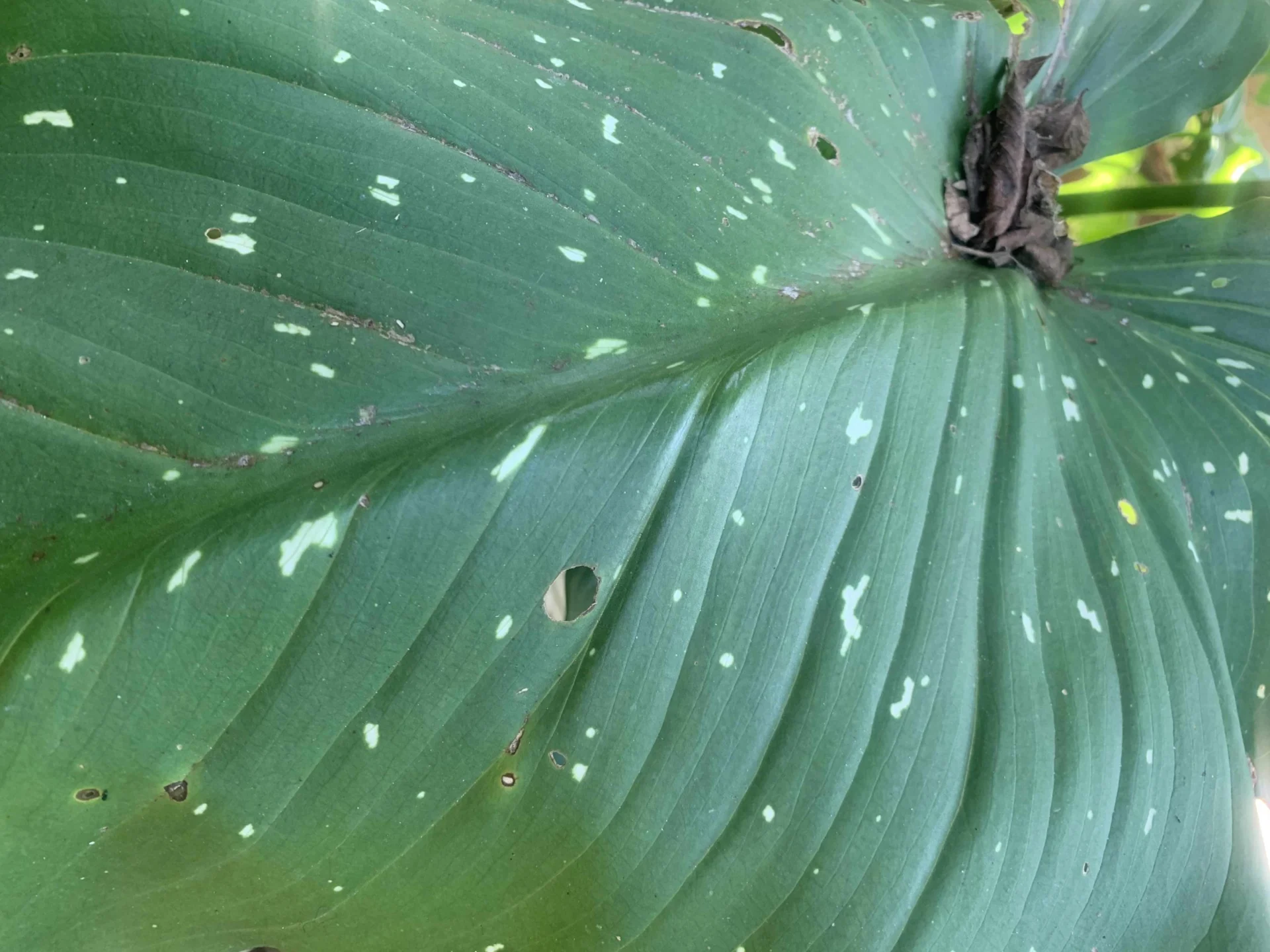
The Calla and Arum lilies in my garden provide a regular supply of leaves to cut circles out of. On a warm day, it is great fun to watch the little bees cut their circles out.
I also plant a bit of amaranth and this provides me with healthy green leaves, and also is just a beautiful plant. If you grow it once and let it seed you will never need to buy seed again. Neither will your neighbors and theirs too. Here is a nice seed type. The one in my picture appears green but as it matures it goes red. The red pigments are very good for you, and this plant can be cooked like spinach. I love the fresh leaves in an omelet.
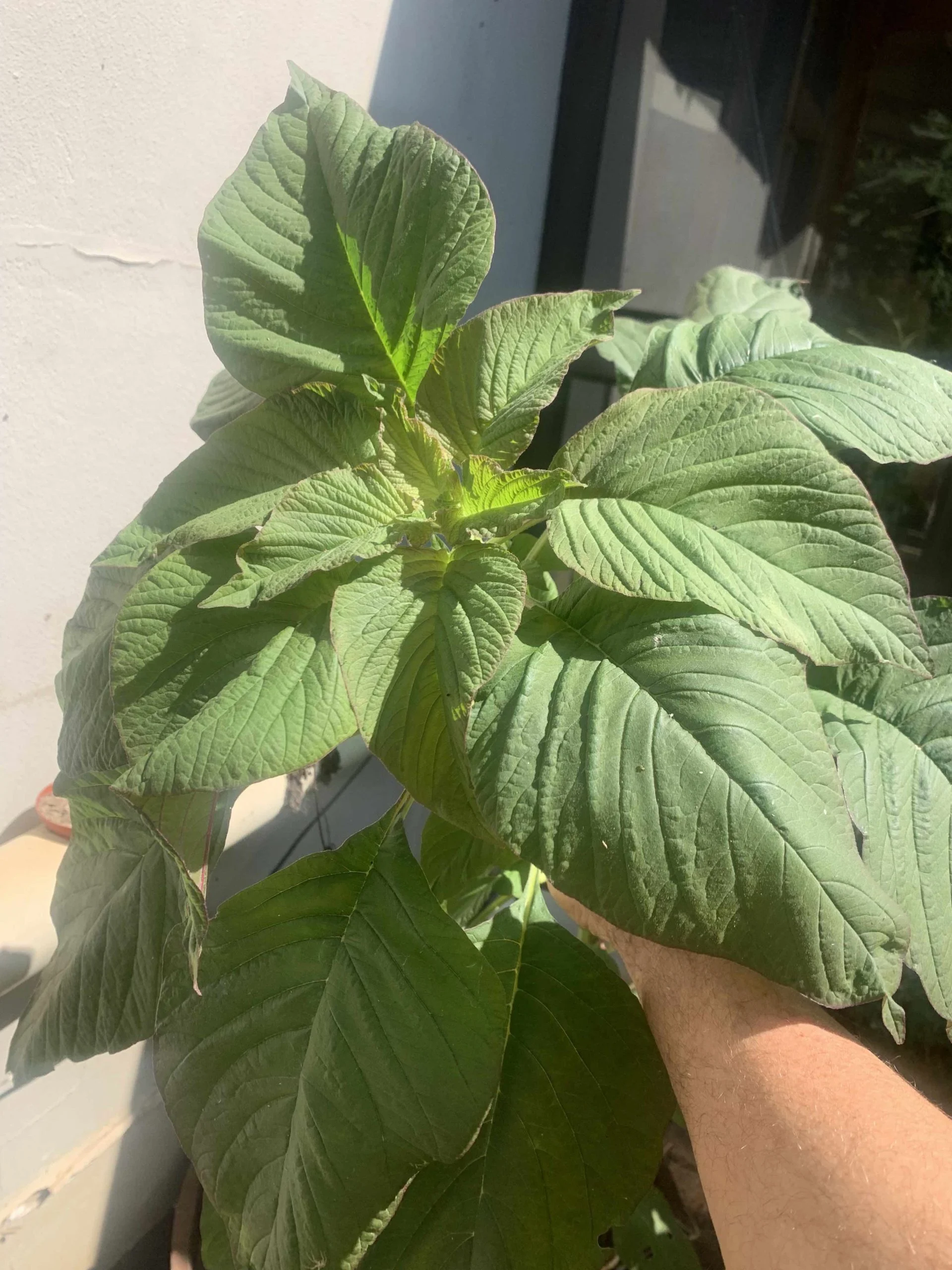
Here you can see the tasty fresh leaves at the top and the older leaves that have had pieces cut out by my leaf cutter bees.
I hope that this article has helped you see that the question is not “How to get rid of leaf cutter bees” but rather “how to get leaf cutter bees to damage another plant so that I can keep these important insects safely in my garden”. If you enjoyed this article please share.
Read more about: How To Make A Honey Bee Trap
FAQs
What are leaf cutter bees, and why are they in my garden?
- Answer: Leaf cutter bees are solitary bees known for cutting circular sections from leaves to create nests. They are excellent pollinators, which is why they are often found in gardens with plenty of flowering plants. While they don’t pose a significant threat, their leaf-cutting behavior can cause cosmetic damage to plants like roses.
Are leaf cutter bees dangerous?
- Answer: No, leaf cutter bees are not dangerous to humans. They are generally non-aggressive and rarely sting. Even if they do sting, the pain is much less severe than that of other bees. Their primary focus is on nesting and pollination, not on interacting with humans.
Can I get rid of leaf cutter bees without harming them?
- Answer: Yes, instead of eliminating leaf cutter bees, you can redirect their activity by providing alternative plants for them to use. Planting species like perennial basil, arum lilies, or amaranth can encourage them to cut leaves from these plants instead of your prized flowers, allowing you to keep these beneficial pollinators in your garden without causing damage.
What plants can I use to divert leaf cutter bees from my garden plants?
- Answer: To divert leaf cutter bees, you can plant perennial basil, arum or calla lilies, and amaranth. These plants provide ample leaf material for the bees to use, reducing the likelihood that they will target more delicate or ornamental plants in your garden, such as roses.
Why shouldn’t I kill leaf cutter bees?
- Answer: Leaf cutter bees are important pollinators that contribute significantly to the ecosystem. Killing them would reduce pollination in your garden, affecting the growth and health of flowering plants. It’s more beneficial to redirect their activity rather than eliminate them.
How do I prevent leaf cutter bees from damaging specific plants?
- Answer: To prevent leaf cutter bees from damaging specific plants, you can cover vulnerable plants with a fine mesh or netting to protect the leaves. Additionally, planting alternative plants nearby that the bees prefer can reduce damage to your chosen plants.
Will leaf cutter bees harm my garden’s overall health?
- Answer: No, leaf cutter bees generally do not harm the overall health of your garden. While they may cause cosmetic damage to some leaves, their presence is a sign of a healthy ecosystem, and their pollination efforts can benefit the garden as a whole.
What should I do if leaf cutter bees are causing significant damage?
- Answer: If leaf cutter bees are causing significant damage, consider increasing the number of alternative plants that they can use for nesting. You can also temporarily cover affected plants until the bees have moved on or their activity has decreased. Always aim for solutions that protect both your plants and the bees.

Dr. Garth A. Cambray is a Canadian/South African entrepreneur and beekeeper with 28 years of experience in apiculture and specializes in adding value to honey. His Ph.D. research developed a new advanced continuous fermentation method for making mead that has resulted in a number of companies globally being able to access markets for mead. His company, Makana Meadery, exports honey mead to the USA where it is available to discerning connoisseurs. He has also developed technologies to commercially manufacture organic honey vinegar in Zambia for export globally. He holds a few patents globally in the ethanol industry and believes in technology and knowledge transfer for human development and environmental sustainability. One of his proudest achievements is the fact that the wind farm he started at one of his old apiary sites has essentially made his hometown carbon neutral.

